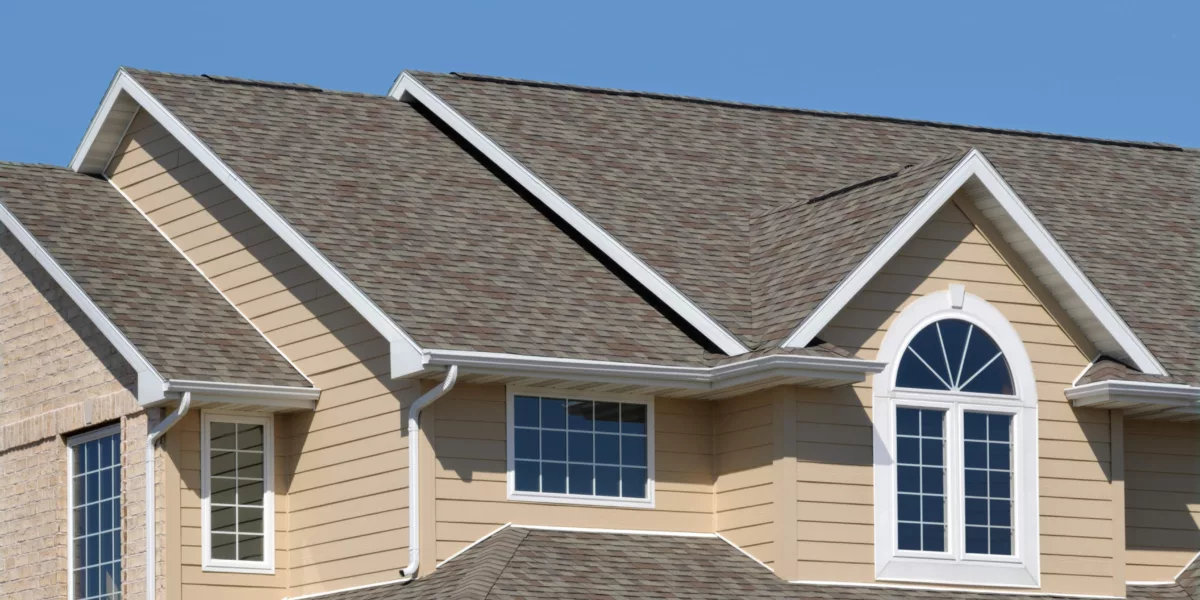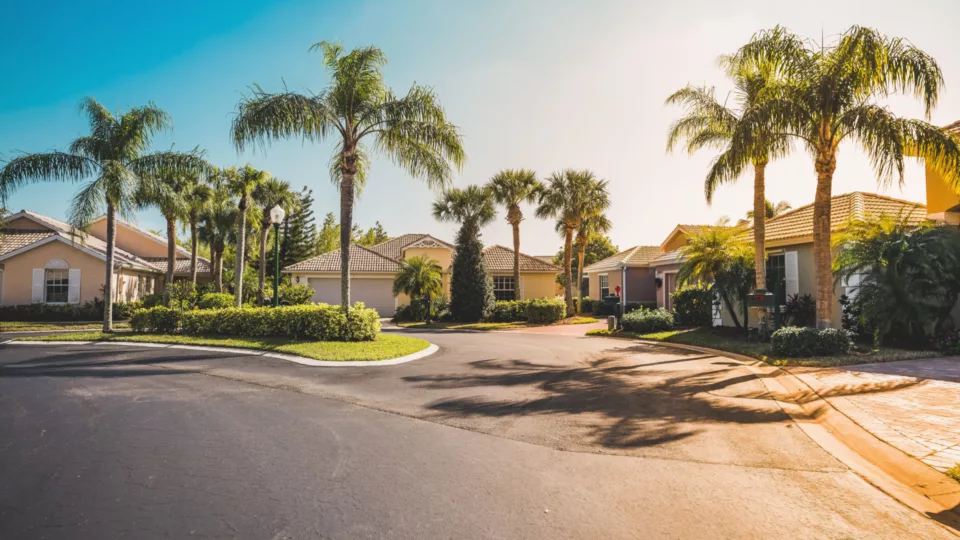In This Article
When your home is in Southwest Florida, the type of roof you have on your home can be kind of a big deal. When homes in your subdivision routinely lose their shingles during storms, residential roofing systems become a common topic in neighborhood gatherings.
When you live in a coastal community, danger can come a-calling. Threats can include hurricanes, coastal storms, flooding, landslides, tornadoes, tsunamis, coastal erosion, sea level rise—well, you get the idea.
A residential roof system is the first line of defense against many of these weather events that come standard with coastal living. Classic Roofing & Construction is your local roofing contractor in St. Petersburg, Tampa Bay, Clearwater, and Fort Myers. We are the right pros to protect your home. In our experience, here are the toughest eight residential roofing systems to protect homes in coastal communities.
Toughest Building Codes
In the past, it wasn’t that Florida didn’t have building codes, it is just that they weren’t enforced often. All that changed with Hurricane Andrew in 1992. That one storm, which destroyed 125,000 homes in just Miami-Dade County alone, was so powerful building code officials ended up changing building codes because of it. Wind speeds topped 165 mph and the storm left $25 billion in damages to the area.
CLASSIC ROOFING – FAMILY OWNED AND SERVING THE COMMUNITY FOR OVER 20 YEARS
CLASSIC ROOFING – FAMILY OWNED AND SERVING THE COMMUNITY FOR OVER 20 YEARS
The new building code subsequently classified Miami-Dade and Broward Counties as High-Velocity Hurricane Zones or HVHZ. Laws governing the construction of roofs are detailed and specific, as a result. This goes for every piece of the puzzle that goes into making residential roofing systems, including synthetic felt underlayment, precise spacing for fasteners, the types of fasteners allowed to be used, the taping of all spacing where sheathing meets, and much, much more.
Not surprisingly, all roofing contractors must pass rigorous testing, as well as be licensed, bonded, insured, and have worker’s compensation insurance to work in the state of Florida. Contractors must pass tests to have licenses for each county they work in, as well.
Here’s an overview from the team at Classic Roofing & Construction on the eight toughest residential roofing systems on the market to meet the needs of coastal cities in Southwest Florida.
1) Metal Roofing Is Still King
Steel is still king when it comes to a host of roofing material features and benefits, including durability, strength, cost, longevity, and performance. A company called Union Corrugating, for example, has several product lines that meet HVHZ building code requirements.
Galvanized steel is one of the most common materials for roofing products, which can be installed with standing seam panels or with v-crimp fastening systems. Standing seam usually costs about 20% more than v-crimp panels. Both offer watertight roof systems that can last 60 years or more, especially if the roofs are well-maintained. An added benefit is that metal can reflect sunlight, keeping the structures underneath cooler and reducing energy costs.
Subcategories of metal roofing products include:
2) Copper
These roofs naturally form a green patina over time, thanks to exposure to air, moisture, and temperature fluctuations. The patina protects the copper from corrosion and adds to its beauty—nature’s artwork on display.
3) Aluminum
This metal has been earning a greater portion of the roofing market because it is more affordable than steel, and the material is corrosion resistant. Aluminum can reflect sunlight, making the buildings under this roofing material more energy efficient and environmentally friendly. This metal is also lightweight and strong. Though not as durable as steel, an aluminum roof will typically last 40 years or more.
4) Wood
It may seem counterintuitive, but wood has been a common exterior cladding (meaning it can be used for both roofing and siding) to keep Mother Nature at bay for hundreds of years. Wood cladding was popular in the North American Colonies and in New England states.
In the years since, this form of cladding has only gotten more impervious to water, insects, sun, and other damaging effects, through the application of sealants and preservatives. It’s not uncommon for wood cladding systems to last several generations, with the proper maintenance.
This cladding material is divided into two categories: Shakes & Shingles
Wood shingles are thinner than wood shakes. They are sawn smooth on both sides and cut tapered, to help shed water. These shingles are sawn so precisely they appear tailored. Shingles can be used for siding or roofs, with a recommendation of 3:12 or steeper in pitch. Wood shingles come in various thicknesses and lengths, depending on their needed application.
Grading Categories: Because this product comes from a natural product, it’s graded for quality.
#1 The best grade available, crafted from a tree’s heartwood, 100% edge grain with no defects. Used for roofing and siding.
#2 Flat grain with limited sapwood allowed, with limited knots and defects allowed above the “clear portion”—that’s the part that shows once the shingle is installed. Often used as the starter course of shingles on the roof edge, by the eaves.
#3 Can include sapwood and flat grain wood, with limited knots and defects allowed in the clear portion. Used for the under-course in a two-course application of shingles or siding, also used on outbuildings, gazebos, and other decorative applications for either shingles or siding.
Wood Shakes are thicker than wood shingles. The two main types of shakes are:
- Hand-split and re-sawn: These shakes are like shingles but only thicker, more rugged, less refined
- Shakes are sawn smooth on the back of the shingle, for a solid fastening to the roof deck.
- On the front is the roughly split appearance, with grain and grooves exposed for all to see.
- Tapersawn shakes are sawn on both sides, giving it a tailored appearance
5) Clay Tiles
Tile roofing is super popular, especially here in Florida. The team at Classic Roofing & Construction is well-versed in tile roof construction in Pinellas County.
Today tiles come in two forms:
- Traditional clay tiles are made from clay that’s mined, the clay is mixed to achieve the right consistency, then fired in a kiln. The manufacturing process can take more than three months for each batch. This process produces traditional terra cotta tiles. If you’re looking for a classic, historical look, then clay tiles are the product for you.
- Concrete tiles, in contrast, are manufactured with concrete, aggregate, and water, then vibrated in a press. The manufacturing process takes 15 to 30 days. While concrete tiles are meant to mimic clay, a practiced eye can easily tell them apart.
Both methods of manufacturing share certain features, including:
- Increased resale value, including more credits on appraisal, houses sell faster in direct comparison to other materials, such as asphalt shingles.
- Longterm durability: Tile roofs have the lowest lifecycle cost of any other roofing material. Clay tiles can last for centuries; concrete tiles can last for 30 to 50 years.
- Fire resistance: Both clay and concrete tiles provide a Class A fire resistant roofing as a product and a building system.
- Built to withstand high winds: Both kinds of tiles are designed and tested to meet Florida’s 150 mph wind speeds.
- Hail resistance: Tile roofs have an added layer of protection built in. The tile itself provides a tough water-shedding outer shell with the underlayment working as an extra shield. Tiles have been tested according to FM4473 for hail resistance ratings. Both clay and concrete tiles can resist damage from hailstones as large as 2 inches, which is larger than a golf ball.
- Seismic resistance tested: Research performed at USC shows tile roofs exceed current seismic load requirements for building materials when installed to the current fastening requirements in the 2021 International Residential Code or IRC.
- Sustainability: Tile roofs meet Green Building Guidelines, LEED, and Energy Star requirements.
- Environmentally friendly: These building materials do not deplete limited natural resources and have no chemical preservatives used in production; all waste can be recycled and does not go into landfills; tile roofs’ long life cycle reduces the need for reroofing that clogs landfills unnecessarily.
- Reflectivity: Independent testing at the Department of Energy’s Oak Ridge National Laboratory has demonstrated that tiles reduce the transfer of heat compared to other roofing materials, such as asphalt shingles, by up to 70%.
- Natural air flow: Natural air ventilation under the tile creates a heat transfer barrier that can provide the benefit of a cooler house in summer and a warmer house in the winter.
- Energy Cost Savings: The natural air flow described above keeps heating costs low in winter and cooling costs low in the summer.
6) Slate Tiles
This all-natural stone product is beautiful, durable, tough, and likely the last roof you will ever need. They cost a lot compared to other residential roofing systems, and they require structurally stronger roof systems to withstand the weight of the stone.
The only maintenance issue with this material is that tiles can absorb water during the rainy season. This causes them to expand and move within the roofing system. This can cause repair issues, especially if sections of roofing start moving. Classic Roofing & Construction has helped clients with slate roofs re-aligning tiles that have slipped. This type of project is best tackled in the winter when there is less rain.
7) Synthetic Slate Tile
A variety of new synthetic and metal slate roofing tiles that look identical to real slate stone are available across the U.S. But these faux slate products cost at least 50% to 60% less to install than the real deal. Compared to real slate, these synthetic slate shingles and tiles are also lighter in weight, highly durable, and weather resistant, making them a premium, high-quality roofing material.
8) Asphalt Shingles
The Asphalt shingles on the market today are not the shingles your Dad may have installed back in the day. Even if you have fallen in love with the look of one of the roofing materials mentioned above, there is a asphalt shingle roofing system that can imitate that look at a fraction of the cost.
Classic Roofing & Construction uses GAF roofing materials for all roofing projects. Classic is one of the few GAF Master Elite Certified contractors in the St. Petersburg, Tampa, Clearwater, Fort Myers, Florida, communities. We only use GAF Timberline HD® Lifetime High Definition® Shingles for superior roofing value and performance, so you can be sure that your roof will be installed by experts.
Even if you need an emergency roof repair from Hurricane Ian, you can count on GAF to provide you with the materials suitable for your home and needs. One of the main reasons why GAF roofing systems are so popular among homeowners is the variety of shingle designs available. While other residential roofing systems brands may offer similar varieties and styles, GAF provides a wider range of architectural, designer, and specialty shingles. These shingles do more than just improve the curb appeal of your home because they meet different performance requirements based on your local climate.
In addition to being a GAF-certified roofing company, Summit Roofing & Restoration, Inc. is also an established contractor trusted by the local community. We offer top-notch roof repair or replacement services and are committed to providing customers with an exceptional roofing system. GAF manufactures durable and beautiful weather-resistant shingles, so if you’re looking for a roof that adds curb appeal and value to your home, contact our team.
Call us at 727-329-8023 in Tampa or 239-932-5225 in Fort Myers, or schedule a free estimate.
Award Winning Professionals Are Here To Help!






